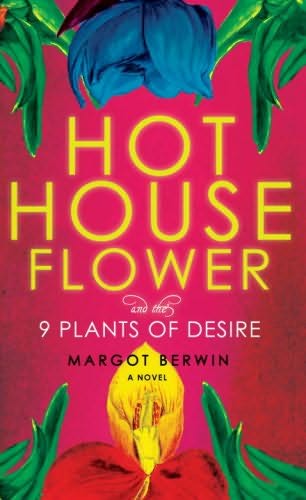
But there is always another novel, as we bibliophiles know. Margot Berwin’s Hot House Flower and the Nine Plants of Desire is an enchanting light first novel with a hint of magic realism, set in New York and Mexico. I was immediately captivated by the heroine’s tentative encounters with tropical plants, her discovery of a laundromat decorated with tropical plants and moss, and a quest for the legendary Nine Plants of Desire. This charmer of a summer read is narrated by the likable but confused Lila Nova, a divorced, clever, sometimes calculating advertising executive who stumbles into a kind of magical world of gorgeous tropical plants, dominated equally by good and evil gardeners: David Exley, a handsome, greedy plant seller at a market, sells her a Bird of Paradise plant; Armand, the laundromat owner, promises to show her the 9 Plants of Desire if she can root a cutting from a rare fern.
Armand tells her, “The tropics can happen anywhere, you know. They’re a state of mind.”
He asks her to close her eyes and picture a laundromat. “I see white plastic baskets on wheels, filled with dirty clothes, and boxes of laundry detergent with bright-blue, green, or red letters....”
Armand visualizes it differently:
“I see a room with absolutely perfect growing conditions. Plenty of heat from industrial-strength dryers, mist and moisture from powerful washing machines, and just the right amount of sunlight from the windows- not too direct, because in a Laundromat of this age they are usually scratched. To me, a Laundromat is an ideal greenhouse that just so happens to have some clothes going around in circles.”
Berwin has a visual, tactile imagination and sensually describes the colors and textures of plants and people in New York and Mexico.
During the novel, Lila grows and learns about herself. Corrupted by the advertising world and damaged by her ex-husband, seduced by David Exley, who is not what he seems, she betrays Armand for the chance to make money. And after David steals Armand's plants - she had intended to sell him cuttings - she embarks on a wild trip to the rain forest in Mexico to replace the plants.
This is a light novel, somewhere on the cusp between romance and almost-literary fiction. It's like a perfect book club choice, and I enjoyed it.
P.S. What I find serendipitously funny is that Catseye and Hot House Flower have a few parallels. Both the shop and the laundromat are thieves' targets.
Hot House Flower is a great novel to read outside: here's MY (vegetable) garden!

No comments:
Post a Comment